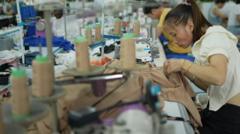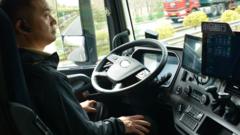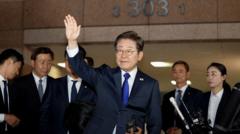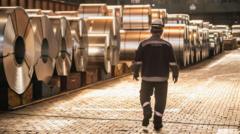An exploration of the labor dynamics and ethical concerns surrounding the fast-fashion giant Shein, revealing the hardships faced by workers in Chinese factories.
The Untold Story Behind Affordable Fashion: Shein's Chinese Factories Exposed

The Untold Story Behind Affordable Fashion: Shein's Chinese Factories Exposed
An Inside Look at Worker Conditions in the "Shein Village" of Guangzhou
In the bustling textile heart of Guangzhou lies a web of factories fueling Shein's rapid rise as the world’s largest fast-fashion retailer. Known as Panyu, or the "Shein village," this area is characterized by the continuous hum of sewing machines operating from dawn till well into the night, producing everything from swimwear to everyday apparel for consumers in over 150 countries.
During a comprehensive investigation, the BBC uncovered alarming labor practices in these facilities; many workers reported clocking in as much as 75 hours a week, often in violation of Chinese labor regulations. The factories, a mere part of Shein's vast operation, offer minimal time off, with workers often receiving just one day off per month.
Shein, now valued at around £36bn ($60bn) and eyeing a public offering in London, is often scrutinized for its worker treatment and allegations of labor exploitation, including past admissions of child labor within its supply chain. In response to inquiries, Shein asserted its commitment to fair worker treatment and compliance, investing heavily in governance measures; however, many critics remain unconvinced.
The low price tags of Shein products, such as £10 dresses and £6 sweaters, have made their inventory very attractive, largely supported by local factories aiming to meet massive order demands. With approximately 5,000 factories functioning as Shein suppliers, the production process is relentless. Workers shared that they might earn less than a dollar per basic t-shirt, often relying on intense workloads to increase their monthly earnings, which fluctuates between 4,000 and 10,000 yuan.
Local labor markets often buzz with activity as workers search for short-term contracts, weighing the pay advantages of various jobs amidst all-consuming competition. Many workers in these factories, though aware of the long hours and tough conditions, exhibit a mix of pride and resignation regarding their roles in this high-pressure industry, often comparing their work environments to a family unit.
The hours can be grueling, often stretching late into the night, with workers continuing their tasks long after sundown. The emotional toll and difficulty in securing a living wage, despite working in a profitable industry, often leave these workers in a difficult economic situation. Advocacy groups argue that Shein's operational model showcases an extreme form of exploitation that disregards basic human rights, calling for accountability and greater transparency in its labor practices.
As Shein continues to innovate in its fast-paced fashion model, balancing consumer demand with ethical production remains a significant challenge for the company and its supply chain. The tensions between profit and the welfare of workers will likely shape the future of the fast-fashion landscape and public perception of brands like Shein.
During a comprehensive investigation, the BBC uncovered alarming labor practices in these facilities; many workers reported clocking in as much as 75 hours a week, often in violation of Chinese labor regulations. The factories, a mere part of Shein's vast operation, offer minimal time off, with workers often receiving just one day off per month.
Shein, now valued at around £36bn ($60bn) and eyeing a public offering in London, is often scrutinized for its worker treatment and allegations of labor exploitation, including past admissions of child labor within its supply chain. In response to inquiries, Shein asserted its commitment to fair worker treatment and compliance, investing heavily in governance measures; however, many critics remain unconvinced.
The low price tags of Shein products, such as £10 dresses and £6 sweaters, have made their inventory very attractive, largely supported by local factories aiming to meet massive order demands. With approximately 5,000 factories functioning as Shein suppliers, the production process is relentless. Workers shared that they might earn less than a dollar per basic t-shirt, often relying on intense workloads to increase their monthly earnings, which fluctuates between 4,000 and 10,000 yuan.
Local labor markets often buzz with activity as workers search for short-term contracts, weighing the pay advantages of various jobs amidst all-consuming competition. Many workers in these factories, though aware of the long hours and tough conditions, exhibit a mix of pride and resignation regarding their roles in this high-pressure industry, often comparing their work environments to a family unit.
The hours can be grueling, often stretching late into the night, with workers continuing their tasks long after sundown. The emotional toll and difficulty in securing a living wage, despite working in a profitable industry, often leave these workers in a difficult economic situation. Advocacy groups argue that Shein's operational model showcases an extreme form of exploitation that disregards basic human rights, calling for accountability and greater transparency in its labor practices.
As Shein continues to innovate in its fast-paced fashion model, balancing consumer demand with ethical production remains a significant challenge for the company and its supply chain. The tensions between profit and the welfare of workers will likely shape the future of the fast-fashion landscape and public perception of brands like Shein.





















